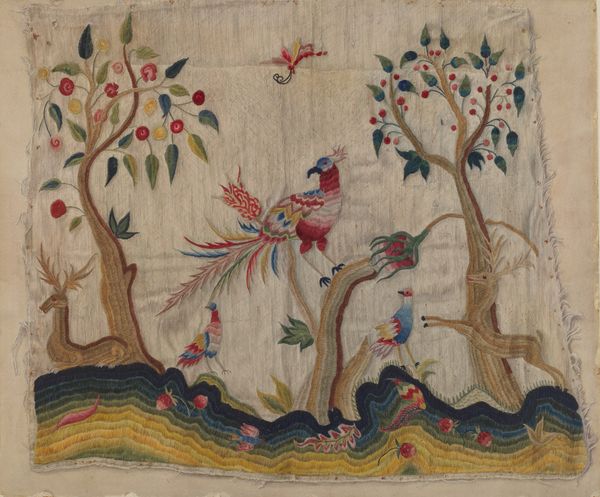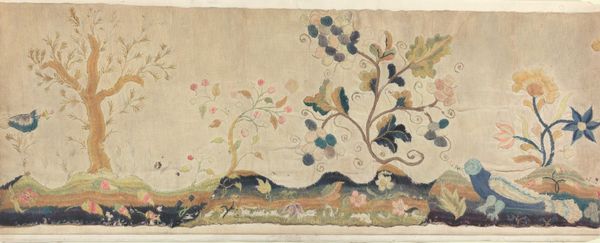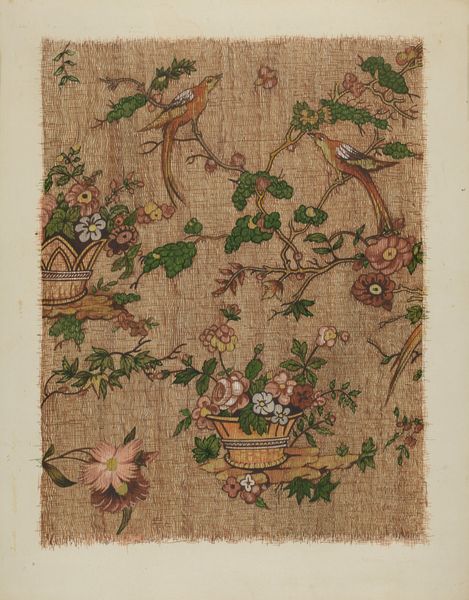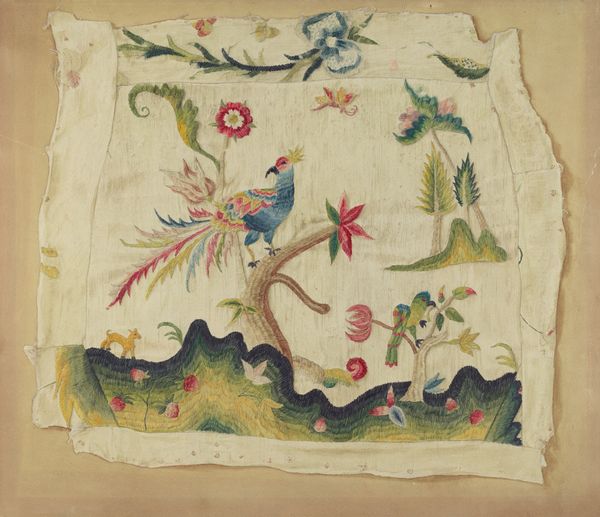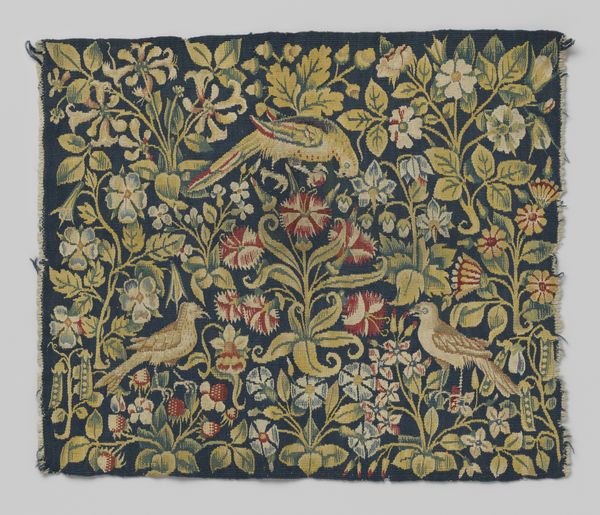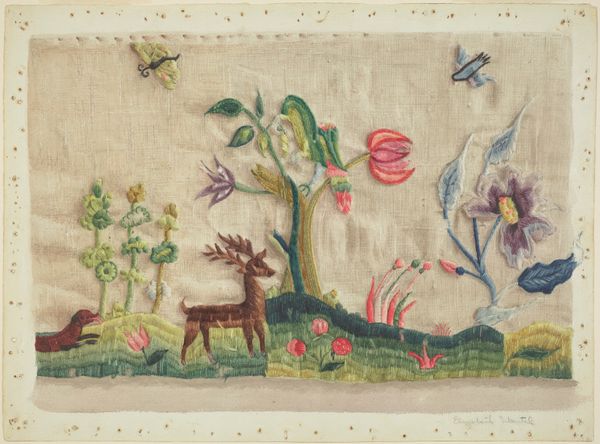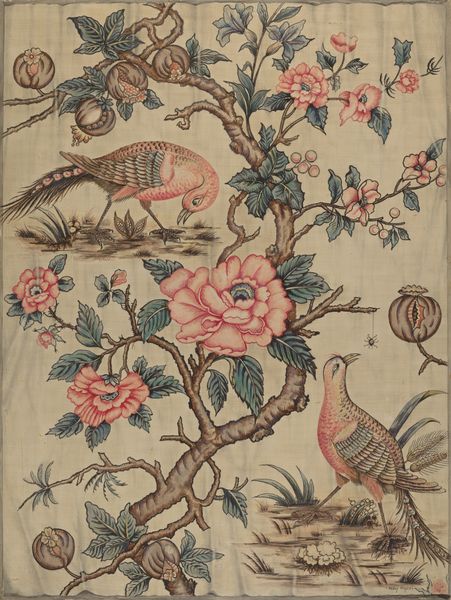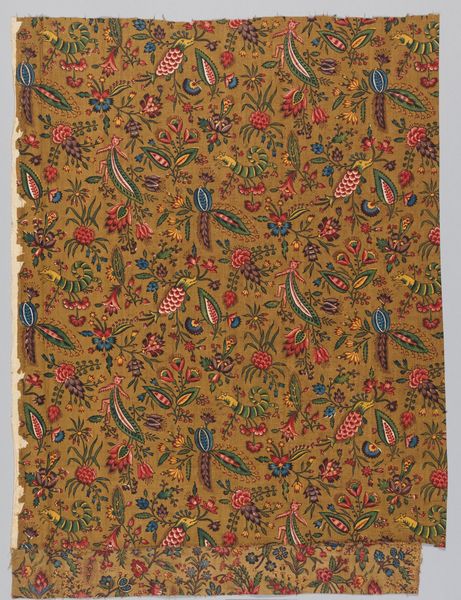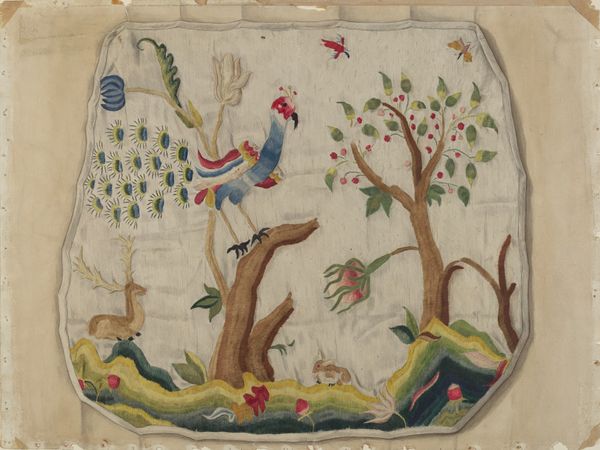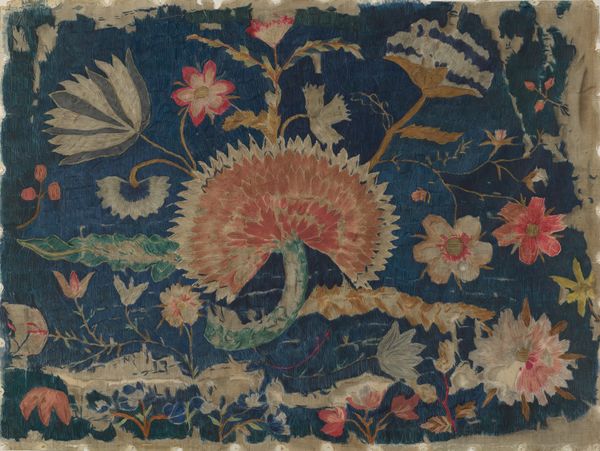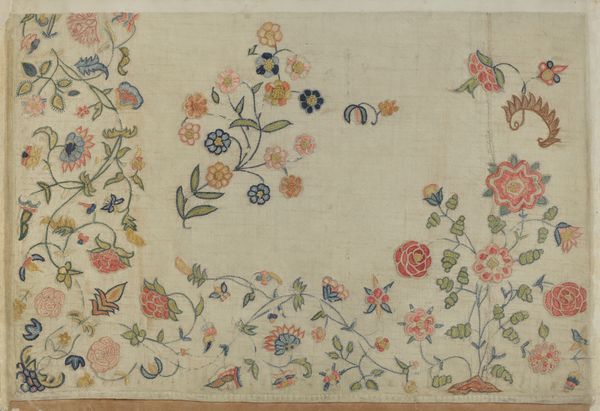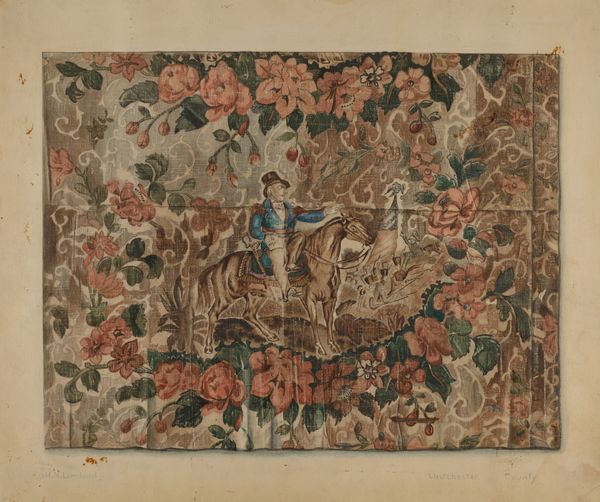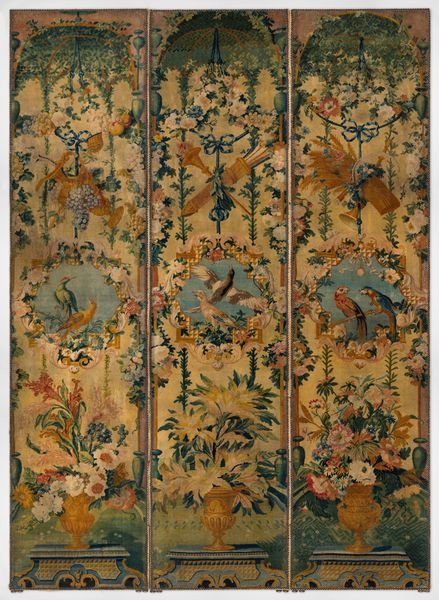
textile, wool
#
natural stone pattern
#
abstract painting
#
pottery
#
textile
#
wool
#
handmade artwork painting
#
tile art
#
stoneware
#
wooden texture
#
united-states
#
earthenware
#
decorative art
#
watercolor
Dimensions: 67 x 82 in. (170.18 x 208.28 cm)
Copyright: Public Domain
Editor: This is a "Bed Curtain," created around 1740. It’s a wool textile piece located here at the Minneapolis Institute of Art, and I’m immediately struck by its somewhat fantastical, almost dreamlike imagery and unusual color combinations. What formal elements stand out to you when you look at this textile? Curator: The first thing I notice is the dynamic interplay between line and form. Notice the intricate embroidery that creates these floral and faunal motifs. The linear quality of the stitching defines each shape, yet also contributes to the overall texture of the piece. Observe the arrangement of the elements; how would you describe the composition? Editor: It feels very deliberately spaced, maybe even a little bit sparse in certain areas. The figures are distinct but still connected. I can see there are no obvious overlaps to cause a sense of depth. Curator: Precisely. There’s a calculated flatness. The lack of traditional perspective flattens the picture plane. We have a fascinating use of color—juxtaposing bright, saturated hues with muted tones. This enhances the visual impact of the design elements, doesn't it? The use of wool is important to note. Can you make out the patterns made? Editor: The individual stitches look highly controlled; a variety of looping and straight stitches make up the whole image. They enhance the color variations that give it texture and rhythm, don't they? Curator: Yes, there's that distinct texture and subtle undulations across the surface. The medium and its manipulation are central to the experience. How do the structural decisions guide us? Editor: Considering the choices the anonymous artist made helps me realize this "curtain" could very easily function as a kind of painting, or as a decorative form in and of itself. Curator: Agreed. By examining the structural components, we unlock new possibilities beyond its original function.
Comments
minneapolisinstituteofart almost 2 years ago
⋮
For centuries beds were extremely important pieces of furniture that were frequently enriched with the addition of elaborate textiles. Bed curtains such as this panel, added a bold aesthetic statement complimenting the tastes of the period, to a room that was used as a social center as well as a place for nocturnal rest. The overall design reflects colonial appreciation of England's interpretation of the Indian floral style while the inclusions of animals and the diversity of the crewel worked embroidery points to the skill and sophistication present in the Boston area during the middle of the 18th century.18th century American embroidery of this size and quality are extremely rare.
Join the conversation
Join millions of artists and users on Artera today and experience the ultimate creative platform.
